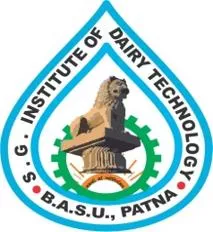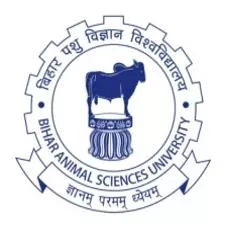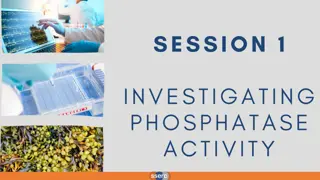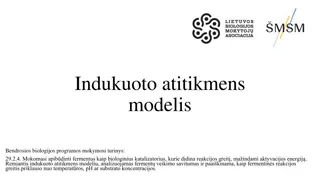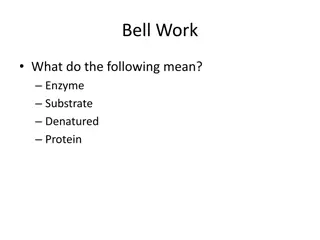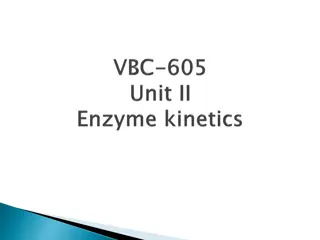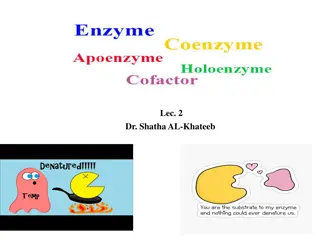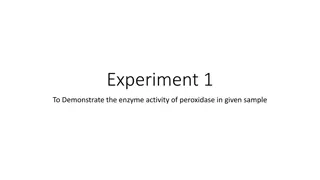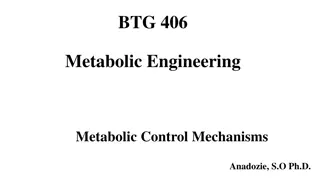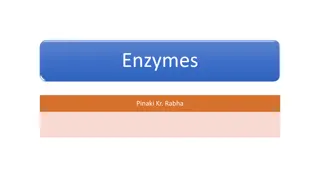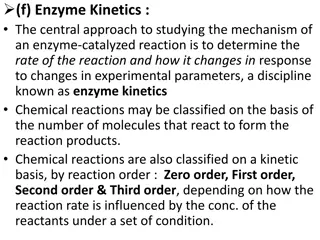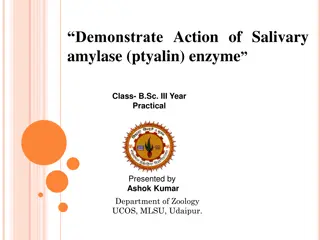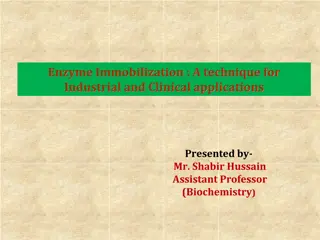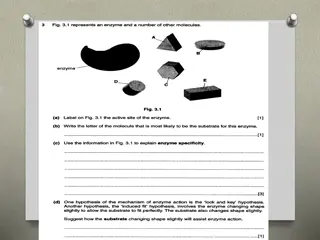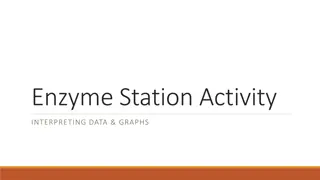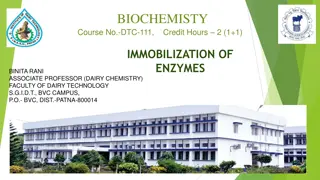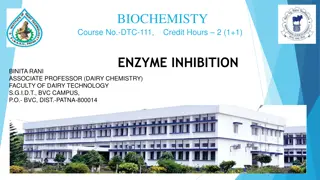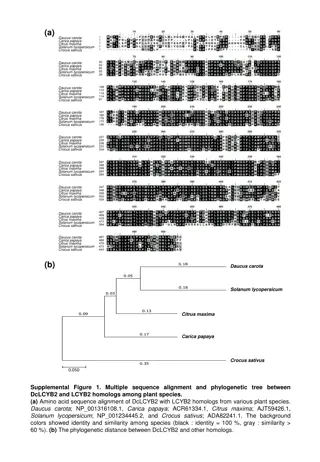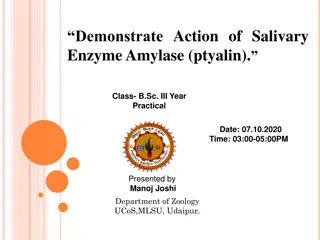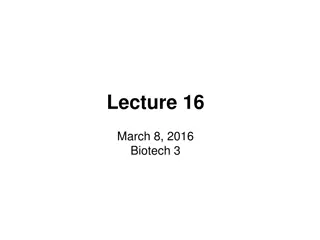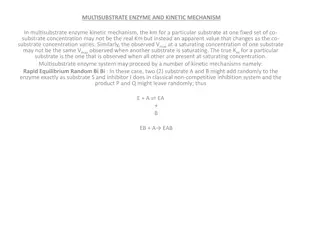Enzyme Action: Mechanisms and Models
Enzymes play a crucial role in biochemical reactions by recognizing specific substrates and catalyzing reactions at remarkable speeds without being consumed. This article delves into the mechanisms of enzyme action, including the lock-and-key and induced-fit models, highlighting how enzymes lower activation energy to accelerate reactions effectively.
Download Presentation

Please find below an Image/Link to download the presentation.
The content on the website is provided AS IS for your information and personal use only. It may not be sold, licensed, or shared on other websites without obtaining consent from the author. Download presentation by click this link. If you encounter any issues during the download, it is possible that the publisher has removed the file from their server.
E N D
Presentation Transcript
BIOCHEMISTY Course No.-DTC-111, Credit Hours 2 (1+1) MECHANISM OF ENZYME ACTION BINITA RANI ASSOCIATE PROFESSOR (DAIRY CHEMISTRY) FACULTY OF DAIRY TECHNOLOGY S.G.I.D.T., BVC CAMPUS, P.O.- BVC, DIST.-PATNA-800014
Enzymes do two important things: they recognize very specificsubstrates, and they perform specific chemical reactions on them at fantastic speeds. Their role is: to make and break specific chemical bonds of the substrates at a faster rate and to do it without being consumed in the process. At the end of each catalytic cycle => enzyme is free to begin again with a new substrate molecule.
Catalysis is simply making => reaction go faster it follows that => activation energy of a catalyzed (faster) reaction is lower than => activation energy of an uncatalyzed reaction. Thus enzymes work by => lowering the activation energy of the reaction they catalyze. The way they accomplish all this can be described by => a number of different models => each one of which accounts for => some of the behavior that enzymes exhibit. Most enzymes make use of => all these different mechanisms of specificity and/or catalysis.
1. Lock-and-Key Model of Enzyme-Substrate Binding In this model, active site of unbound enzyme is => complementary in shape to the substrate. As if the key fits in the lock will then open the lock => It accounts for why the enzyme only works on certain substrates.
2. Induced-Fit Model of Enzyme-Substrate Binding In this model => enzyme changes shape on substrate binding. The active site forms a shape => complementary to the substrate only after the substrate has been bound. Binding of the correct substrate => triggers a change in the structure of enzyme => that brings catalytic groups into => exactly the right position to => facilitate the reaction. In the induced-fit model => structure of the enzyme is different => depending on whether the substrate is bound or not. The enzyme changes the shape (undergoes a conformational change) => on binding the substrate. This conformation change converts => enzyme into a new structure in which => the substrate and catalytic groups on the enzyme are properly arranged to => accelerate the reaction.
3. Multi Substrate Reaction Mechanism Most reactions in biological systems usually include => two substrates and two products and => can be represented by => bisubstrate reaction. Majority of such reactions entail => transfer of a functional group => such as a phosphoryl or a hydroxyl group => from one substrate to the other. There are three general mechanisms which describe multi- substrate enzyme system. Ordered mechanism Random mechanism Ping-Pong mechanism
a) Ordered mechanism In this type of reaction => all substrates must bind to the enzyme before any product is released. Consequently => in a bi-substrate reaction => a ternary complex of the enzyme and both substrates forms. In ordered mechanism => substrates bind the enzyme in a defined sequence. Many enzymes that have => NAD+ or NADH as a substrate => exhibit => the sequential ordered mechanism. Consider lactate dehydrogenase => an important enzyme in glucose metabolism. This enzyme reduces => pyruvate to lactate while oxidizing NADH to NAD+. In the ordered sequential mechanism => coenzyme always binds first, and => lactate is always released first.
This sequence is represented below : Conversion to lactate
b) Random mechanism In this mechanism also => enzyme exists as a ternary complex => first, consisting of enzyme and substrates and, after catalysis, => enzyme and products. In the random sequential mechanism => the order of addition of substrates and release of products is random. Sequential random reactions are illustrated by => formation of phosphocreatine and ADP from ATP and creatine => a reaction catalyzed by creatine kinase. Phosphocreatine is => an important energy source in muscle. Although the order of certain events is random => the reaction still passes through the ternary complexes including => first, substrates and => then, products.
c) Double-displacement (Ping-pong) reactions. In double-displacement, or Ping-Pong, reactions => one or more products are released before => all substrates bind the enzyme. The defining feature of double-displacement reactions is => existence of a substituted enzyme intermediate, in which => the enzyme is temporarily modified. Reactions that shuttle amino groups between amino acids and - keto acids are => classic examples of double-displacement mechanisms. The enzyme aspartate aminotransferase catalyzes => transfer of an amino group from aspartate to ketoglutarate.
The sequence of events can be portrayed as the following diagram: Double-displacement (Ping-pong) reactions After aspartate binds to the enzyme => the enzyme removes aspartate's amino group to form => substituted enzyme intermediate. first product => oxaloacetate => subsequently departs. second substrate => -ketoglutarate => binds to the enzyme => accepts the amino group from the modified enzyme => and is then released as the final product => glutamate. In this => substrates appear to bounce on and off => the enzyme analogously => to a Ping-Pong ball bouncing on a table.
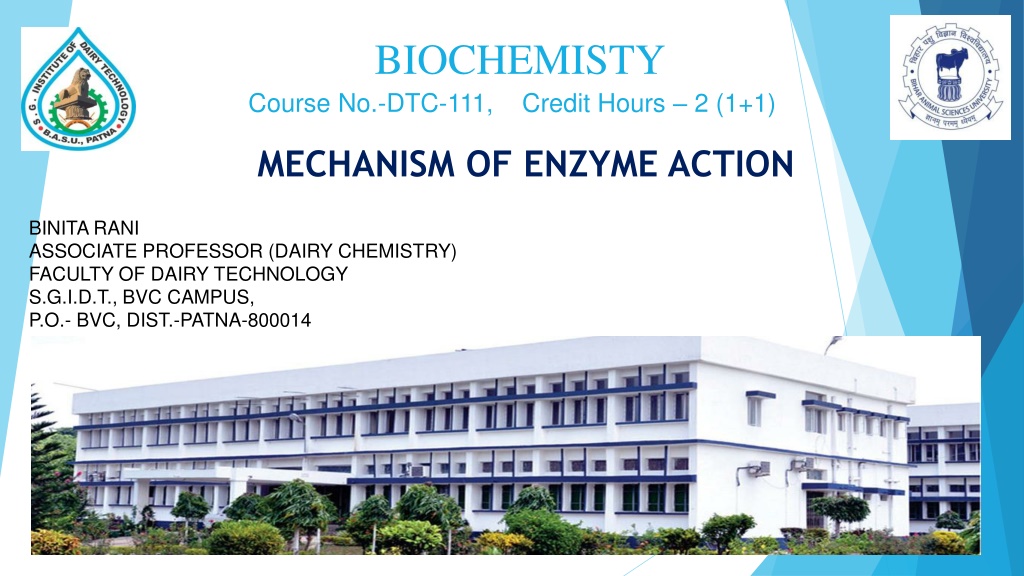
 undefined
undefined
